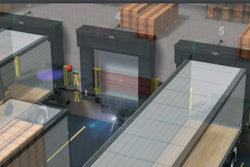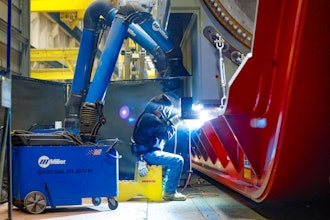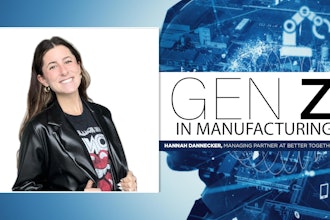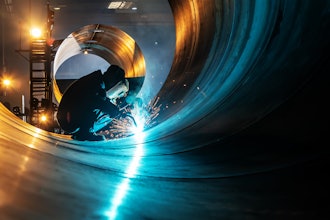
THE 3D PRINTING SOLUTIONS COMPANY
By Stratasys, Ltd.
Rapid prototyping has become a game-changing innovation for designers, engineers
and manufacturers since it was introduced two decades ago. Previously, prototypes
would be constructed from wood or metal in woodwork or machine shops. The process
took weeks or months and the cost was often so prohibitive that designers
skipped prototypes entirely and went directly from CAD to tooling. Often this
meant that design flaws were not identified until manufacturing began, leading to
expensive re-work and lost time.
Top Five Reasons to Integrate
PolyJet Technology into your Product
Development Lifecycle
Top Five Reasons to Integrate
PolyJet Technology into your
Product Development Lifecycle
Rapid prototyping technology has progressed
significantly over the years improving on both
the cost and quality fronts. Circa 2000, PolyJet™
technology was introduced to the market, a
jetting process of photopolymer resin in ultra-
thin individual layers that builds 3D models and
prototypes. The resin is simultaneously cured
with a UV light during the layering process, an
approach that allows for the printing of several
materials at once including flexible, rubber-
like materials, rigid materials, opaque and
transparent materials and even composite Digital
Materials. Newer 3D printers allow for up to three
components to be combined into a single material,
including the option to combine Digital ABS™ with
a third base resin.
Combining smooth surface finish, highly accurate
geometries and a large selection of materials
and material combinations, PolyJet technology
enables the best representation of the intended
final product. PolyJet technology is also a clean
process suitable for both office and desktop
environments.
IS POLYJET TECHNOLOGY
RIGHT FOR YOU?
Based on a survey of users from various
markets — including consumer goods, consumer
electronics, medical device, education, research,
entertainment and others — Stratasys crafted
these top five reasons to integrate PolyJet
technology into your product development
lifecycle.
1. Designers can prototype more
iterations without blowing the timeline
or budget.
3D printing – particularly when performed in-
house – enables design teams to quickly produce
a high-quality, realistic prototype with moving
parts, at low cost when compared to other
methods such as CNC machining or outsourcing.
This means teams can use prototyping on projects
where it wasn’t feasible in the past due to time or
cost considerations.
“We needed a faster, more streamlined system:
one that would let us do the engineering,
development and production of clinical trial-
ready devices in-house,” says André A. DiMino,
Ivivi’s medical device prototype printed on an Objet® 3D Printer.
TOP FIVE REASONS / 2
Top Five Reasons to Integrate
PolyJet Technology into your
Product Development Lifecycle
executive vice president at Ivivi Technologies. “We
had heard about rapid prototyping and were very
excited about seeing how it could help us.” The
integration of the company’s PolyJet-driven 3D
Printer into product development and production
cycle was an unqualified success, yielding a
positive ROI in less than one year. “We’ve cut an
average of five to six weeks off the clinical trial
device production process,” says DiMino.
2. Better collaboration resulting in
improved design and manufacturability.
The ability to quickly produce real working
prototypes that teams can see and touch helps
quickly bridge the gap between the virtual
3D CAD design and the final product. Design
and manufacturing engineers can use these
prototypes as a tool to better communicate how
a design looks, feels and operates. This allows
designers to better integrate their product designs
with manufacturing at an earlier stage in the
development lifecycle.
Brian McLaughlin from Orchid Design, a division
of Orchid Orthopedic Solutions, says, “Often,
something the designer sees on a rapid prototype
– such as an undercut, or some other area of
difficulty – will cause them to tweak the design
before it goes to the customer or to machining ...
3D printing has definitely had a major impact on
the quality and manufacturability of our designs.”
According to Jon Fawcett from Fawcett Design,
his team now uses an Objet 3D Printer for
“anything and everything. Functional prototypes,
aesthetic prototypes, rigid molds for urethane
cast parts, rapid manufacturing … our Objet 3D
Printer is very versatile. We can now do same-day
turnaround on prototypes, which in turn allows us
to do a lot more prototyping. We can very quickly
see if something will work; we no longer have to
guess or take a chance.”
3. Field test with prototypes that
resemble the final product providing
insight into potential design flaws.
Fender’s guitar amplifier prototype printed on an Objet 3D Printer.
Orchid’s medical device and implant prototype printed on an Objet 3D
Printer.
TOP FIVE REASONS / 3
Top Five Reasons to Integrate
PolyJet Technology into your
Product Development Lifecycle
More prototyping means more opportunity to
evaluate whether or not a part will function as
intended. Prototypes allow designers to catch
potential flaws before incurring the exponentially
higher costs of re-tooling and rework, reducing
some of the risk of introducing new products.
Shawn Greene from Fender Musical Instruments
Corporation describes a recent project to develop
a light-up front panel for an amplifier. Greene
3D printed prototypes of the panel using a clear
material, tested it with different types of lights and
discovered that light didn’t deflect the way his
team thought it would.
“We had to adjust the design to make it work,”
says Greene. “In the past, we would not have done
a prototype for that kind of part because it would
have taken too long and cost too much money. ...
The ability to rapid prototype in house saved us a
fortune on that project.”
4. Improve customer satisfaction.
3D printing can help improve satisfaction for both
internal and external customers. Designers using
3D printing have the ability to quickly produce
realistic prototypes for internal decision-makers
as well as external clients. Having the ability to
touch a real-world concept, combined with testing
functionality, allows all partners in the design and
manufacturing process to make better product
decisions.
The bottom line: 3D printing helps organizations
get better products to market faster than ever
before. “Frequently during a project, clients
request design changes or wonder how particular
changes may impact the overall aesthetic,” says
Piet Meijs, Rietveld Architects. “Our Objet system
lets us create a whole new model right away, and
that wows the client every time.”
“Now that we have it, we tend to use it for all our
projects, and the feedback from our customers
has been terrific,” says Brian McLaughlin of Orchid
Design. “It’s pretty amazing to see someone’s face
when you give them a real model that brings their
idea to life. It really blows them away.”
Rietveld’s architectural prototype printed on an Objet 3D Printer.
TOP FIVE REASONS / 4
Top Five Reasons to Integrate
PolyJet Technology into your
Product Development Lifecycle
5. Seeing is believing.
Design is both an art and a science that starts
with the imagination. 3D printing helps quickly
transform something imagined into something
that can be seen and touched. Prototypes are
often used to help sell new concepts, so the more
realistic the prototype, the better.
“You can show someone something on paper
all day long, but when you give them a real part
that they can touch, they really get excited,” says
Shawn Greene of Fender.
For Thermos, perfecting a design is crucial since
customers touch the finished product with their
hands and mouths. “[3D printing] allowed us to
optimize the fit of the cap stopper and pouring
performance of the best-selling Thermos mugs,”
says Thermos R&D engineer Takahiro Maruyama.
ADDITIONAL CONSIDERATIONS
Cost and time savings are the primary drivers for
incorporating 3D printing and PolyJet technology
into the product development process. But for
some organizations, other factors influence the
need for in-house technology.
The ability to drive revenue – pertaining primarily
to service bureaus — through lower-cost 3D
printing services helps encourage their customers
into giving them ancillary business such as
manufacturing.
Organizations oftentimes weigh the need for
in-house technology against the efficiencies of
outsourcing. A typical maturity curve is to start off
with outsourcing, and then bring it in-house as the
volume of projects grows.
Many customers have realized that an in-house
solution has significant additional benefits like
the ability to protect the confidentiality of their
designs. Customers have also found that the
3D printer can be useful for many different
applications, some of which were originally
unexpected. Add to this the multi-material and
multi-color technology available in the Connex™
line of 3D printers, and customers can achieve
unparalleled product realism.
Adding in-house 3D printing capabilities enabled Thermos to quickly test
out new designs and cost just one-fifth of outsourcing.
TOP FIVE REASONS / 5
TOP FIVE REASONS / 6
Having this technology at their fingertips gives
customers the freedom they need to be more
creative and efficient with their designs.
A 3D printer for every need
Whatever the driver, there are myriad benefits
to integrating 3D printing into your product
development process. In recent years, 3D printing
technology has matured to the point where there
are today a number of different types of systems
on the market, from entry-level desktop machines
to high-end multi-material 3D printers. Stratasys
has a full range of 3D printers designed to meet
your organization’s exact requirements.
[email protected]
STRATASYS.COM
HEADQUARTERS
7665 Commerce Way, Eden Prairie, MN 55344
+1 888 480 3548 (US Toll Free)
+1 952 937 3000 (Intl)
+1 952 937 0070 (Fax)
2 Holtzman St., Science Park, PO Box 2496
Rehovot 76124, Israel
+972 74 745-4000
+972 74 745-5000 (Fax)
ISO 9001:2008 Certified
©2009, 2014, 2016 Stratasys Ltd. All rights reserved. Stratasys, Stratasys logo, Connex, Digital ABS, Objet Eden350 and PolyJet trademarks or registered trademarks of Stratasys Ltd. and/or its subsidiaries or affiliates and may be registered in
certain jurisdictions. Fused Deposition Modeling, FDM Technology are trademarks of Stratasys Inc. Product specifications subject to change without notice. Printed in 2014 and in the USA. WP_PJ_TopFiveReasons_0216a.
For more information about Stratasys systems, materials and applications, call 888.480.3548 or visit www.stratasys.com
THE 3D PRINTING SOLUTIONS COMPANY


















